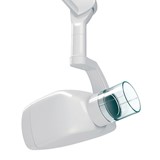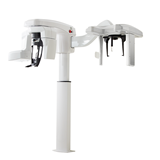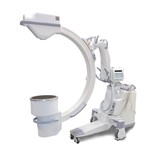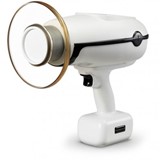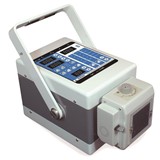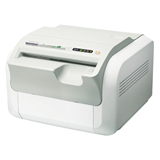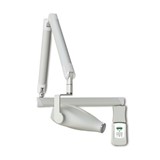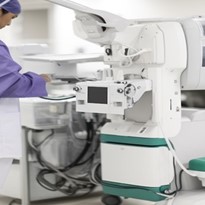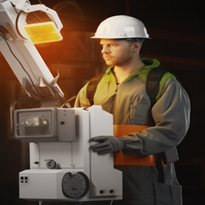In modern healthcare, advanced medical imaging plays a pivotal role in diagnosis and treatment decisions. Mobile X-ray machines have emerged as a versatile and indispensable tool in the medical arsenal, offering numerous advantages for healthcare facilities. This article explores the key benefits of integrating mobile X-ray machines into healthcare settings, highlighting their flexibility, patient-centered advantages, and their ability to enhance medical workflow and cost-efficiency.
I. Flexibility and Versatility: X-Ray Imaging Where Needed
A. On-Demand Imaging
- Mobile X-ray machines bring the advantage of on-demand imaging directly to the point of care. Unlike fixed X-ray units, they can be swiftly deployed wherever and whenever needed within a healthcare facility. This flexibility minimizes delays in diagnosis and treatment, particularly in emergency situations.
- The ability to perform imaging on-site, whether it be in a patient's room, an intensive care unit, or a surgery suite, significantly improves the responsiveness of healthcare teams. This on-demand capability ensures that critical imaging can be conducted promptly, contributing to faster and more effective patient care.
B. Portable Design
- Mobile X-ray machines are designed with portability in mind, allowing for ease of maneuvering within healthcare facilities. Their compact and lightweight construction enables healthcare providers to transport them effortlessly from one location to another.
- One notable advantage of their portable design is the ability to access tight spaces and navigate through crowded areas within a healthcare facility. Mobile X-ray units can be swiftly moved into patient rooms, operating theaters, or even remote areas within larger healthcare complexes, ensuring that diagnostic imaging can be conducted in the most convenient and timely manner.
II. Reducing Patient Transport and Minimizing Discomfort
A. Minimizing Patient Discomfort
- Mobile X-ray machines are designed to minimize patient discomfort by eliminating the need for unnecessary transport. This advantage holds significant importance in healthcare facilities aiming to provide better healthcare outcomes.
- Patients, especially those with mobility limitations or critical conditions, often find the process of being transported within a hospital or clinic to the radiology department physically taxing and uncomfortable. Mobile X-ray machines bring the radiology services directly to the patient's bedside or treatment area, reducing the need for patients to be moved.
- This reduction in patient movement not only alleviates physical discomfort but also contributes to a smoother healthcare experience. Patients can remain in a familiar environment, surrounded by their care team, which can help reduce anxiety and stress during the imaging process.
B. Enhancing Infection Control
- Infection control is a paramount concern in healthcare settings, particularly in critical care environments where patients may have compromised immune systems. Mobile X-ray machines play a vital role in enhancing infection control by minimizing patient movement.
- When patients are transported for imaging, they often come into contact with various surfaces and personnel, increasing the risk of cross-contamination. By bringing the imaging equipment to the patient's location, mobile X-ray machines help reduce the potential for exposure to pathogens.
- This is especially crucial in critical care settings, where patients are more susceptible to infections. Minimizing patient transport not only lowers the risk of infection but also supports the overall safety and well-being of patients.
- Healthcare facilities can maintain a higher level of infection control and reduce the spread of illnesses by adopting mobile X-ray solutions. This proactive approach aligns with the commitment to patient safety and quality care in modern healthcare facilities.
III. Expedited Diagnoses and Prompt Treatment Decisions
In the realm of healthcare, the adage "time is of the essence" couldn't hold truer. Timely diagnosis and prompt treatment decisions are often the linchpins of successful patient outcomes. Mobile X-ray machines have emerged as invaluable tools in this regard, offering a multitude of advantages that expedite diagnoses and enable healthcare teams to make swift and informed treatment decisions.
A. Rapid Imaging Results
- Swift Imaging Process: Mobile X-ray machines are designed for efficiency. They offer a streamlined imaging process that significantly reduces the time it takes to capture and process X-ray images. Unlike traditional stationary X-ray machines that might require patients to travel to specific radiology departments or imaging centers, mobile units can be brought directly to the patient's bedside or point of care.
- Immediate Feedback: These portable devices provide almost immediate feedback to healthcare providers. Within seconds of capturing an X-ray image, the results are available for review. This rapid turnaround time is crucial in situations where quick decisions are required, such as in emergency rooms, critical care units, or trauma centers.
- Enhanced Emergency Care: In emergency medicine, every minute counts. Mobile X-ray machines play a pivotal role in expediting the diagnosis of life-threatening conditions like pneumothorax (collapsed lung), fractures, or foreign body ingestion. With mobile X-ray units readily available, emergency physicians can swiftly assess the patient's condition and initiate appropriate treatment without delay.
- Minimized Patient Discomfort: Rapid imaging results also translate to reduced discomfort for patients. Traditional X-ray processes often involve extended waiting times for the results, leading to anxiety and discomfort. Mobile X-ray machines alleviate this by providing a quick resolution to the diagnostic process, allowing patients to receive the necessary care and treatment sooner.
B. Facilitating Multidisciplinary Consultations
- Timely Collaboration: The advent of mobile X-ray technology has reshaped the way healthcare teams collaborate. Prompt imaging can lead to timely consultations among medical teams, including radiologists, surgeons, nurses, and other specialists. In complex cases where a multidisciplinary approach is essential, mobile X-ray machines act as catalysts for efficient communication.
- Enhanced Decision-Making: Complex medical cases often require a consensus among specialists, each bringing their expertise to the table. Mobile X-ray images can be quickly shared with relevant team members, regardless of their physical location. This real-time collaboration enables medical professionals to collectively analyze the images and formulate treatment strategies more efficiently.
- Reduced Geographic Barriers: Mobile X-ray machines bridge geographical gaps within healthcare facilities. Whether in a large urban hospital or a rural clinic, these devices ensure that the expertise of specialists can be leveraged irrespective of physical proximity. This not only improves access to specialized care but also enhances the overall quality of care delivered.
- Efficient Resource Allocation: By expediting multidisciplinary consultations, mobile X-ray machines also contribute to efficient resource allocation. Instead of patients undergoing redundant or unnecessary tests, a coordinated approach ensures that diagnostic tests and procedures are tailored to the specific needs of the patient. This not only saves time and resources but also minimizes patient discomfort and exposure to radiation.
IV. Enhancing Workflow Efficiency for Medical Teams
A. Streamlined Workflow
Mobile X-ray machines play a pivotal role in the healthcare ecosystem by streamlining the diagnostic process and reducing waiting times for patients. In this section, we will delve into the ways these innovative devices contribute to a more efficient workflow for medical teams.
- Immediate Access to Imaging: One of the primary advantages of mobile X-ray machines is their ability to provide immediate access to high-quality imaging. When a healthcare provider requires an X-ray for a patient, there is no longer a need to wait for a centralized radiology department or an off-site imaging facility. With mobile X-ray machines, the imaging can take place at the patient's bedside, in the emergency room, or in any other location within the healthcare facility. This immediacy accelerates the diagnostic process significantly.
- Reduced Patient Movement: Traditional X-ray procedures often require patients to be transported from their rooms to a radiology department or imaging suite. This can be challenging for patients with mobility issues, and it consumes valuable time for both patients and healthcare staff. Mobile X-ray machines eliminate the need for such patient movements. Medical teams can bring the X-ray machine to the patient, whether they are in a hospital room, an intensive care unit, or a long-term care facility. This not only enhances patient comfort but also minimizes the risk of injury during transportation.
- Enhanced Productivity: Mobile X-ray machines are designed for efficiency. They are equipped with advanced features that allow for quick and precise imaging. Additionally, the user interface is intuitive, enabling healthcare professionals to operate the equipment with ease. This combination of speed and user-friendliness translates into enhanced productivity for medical teams. Radiologic technologists can perform more scans in less time, which is especially crucial in emergency situations where time is of the essence.
- Optimized Resource Allocation: By having mobile X-ray machines readily available, healthcare facilities can optimize the allocation of their resources. Instead of maintaining multiple dedicated X-ray rooms or facilities, they can deploy these mobile units strategically where and when they are needed most. This flexibility allows healthcare providers to make efficient use of their space and personnel, reducing the operational costs associated with maintaining fixed imaging infrastructure.
B. Integration with Electronic Health Records (EHR)
In today's digital age, the integration of mobile X-ray machines with Electronic Health Records (EHR) systems is a game-changer for healthcare providers. This seamless integration not only enhances the efficiency of medical teams but also brings numerous advantages related to digital record-keeping.
- Real-time Data Accessibility: Mobile X-ray machines are equipped with digital imaging technology, which produces electronic image files. These files can be instantly integrated into a patient's electronic health record. This means that physicians and specialists can access X-ray images and reports in real-time, regardless of their location within the healthcare facility. For example, a surgeon preparing for a procedure can review the X-rays on their tablet or computer, even before the patient is transported to the operating room.
- Reduced Administrative Burden: Traditional film-based X-ray systems require the management of physical X-ray films, which can be cumbersome and time-consuming. With mobile X-ray machines and EHR integration, there is no need for film storage, retrieval, or management. This significantly reduces the administrative burden on healthcare staff and eliminates the risk of misplacing or damaging important X-ray films.
- Data Accuracy and Consistency: Digital integration ensures that X-ray images are consistently high in quality and easily retrievable. This consistency is crucial for accurate diagnoses and treatment planning. Furthermore, electronic records are less susceptible to errors often associated with manual record-keeping, such as illegible handwriting or misfiling of documents. This can lead to better patient care and outcomes.
- Enhanced Collaboration: The integration of mobile X-ray machines with EHR systems facilitates collaboration among healthcare providers. Specialists from different departments can access the same patient records and X-ray images, allowing for more informed and coordinated decision-making. This collaborative approach is particularly valuable in complex cases where multiple disciplines are involved in patient care.
V. Cost-Effectiveness and Time Savings with Mobile Imaging Solutions
In the ever-evolving landscape of healthcare, where efficiency and quality of care are paramount, the integration of cutting-edge technology is vital. One such technological advancement that has garnered significant attention in recent years is mobile X-ray machines. Beyond their clinical benefits, mobile X-ray machines offer substantial advantages in terms of cost-effectiveness and time savings for healthcare facilities. In this section, we delve into the financial and temporal aspects of integrating mobile X-ray solutions into healthcare settings.
A. Cost-Efficiency
Cost-effectiveness remains a central concern for healthcare administrators and providers. In this regard, mobile X-ray machines have emerged as a viable and pragmatic solution. Here, we elucidate how these machines contribute to cost-efficiency:
- Reduced Overheads: Traditional fixed X-ray rooms necessitate significant infrastructure investments, including lead-lined walls, specialized flooring, and dedicated spaces. Mobile X-ray machines, in contrast, do away with these costly prerequisites. Their portability allows them to be used in existing patient rooms, avoiding the need for dedicated spaces and associated construction expenses.
- Optimized Resource Utilization: Mobile X-ray machines are versatile and can be shared among different departments within a healthcare facility. This sharing of resources maximizes the utilization of expensive equipment, reducing the need for redundant investments.
- Minimized Maintenance Costs: Maintenance and upkeep of fixed X-ray rooms can be a considerable financial burden. Mobile X-ray machines typically require less maintenance due to their simplified infrastructure. Moreover, many modern mobile X-ray units are designed for durability, further reducing ongoing maintenance costs.
- Cost Savings in Emergency Situations: In emergency scenarios, time is of the essence. Mobile X-ray machines can swiftly reach patients in critical conditions, potentially saving lives. The avoidance of delays associated with transferring patients to a fixed X-ray room can be invaluable.
- Long-Term Savings: While the initial investment in mobile X-ray equipment may seem comparable to that of traditional systems, the long-term savings become apparent over time. Reduced infrastructure expenses, lower maintenance costs, and enhanced resource utilization translate into significant financial benefits in the long run.
B. Time Savings
In healthcare, time often plays a decisive role in patient outcomes. Timely diagnosis and treatment can be the difference between recovery and deterioration. Mobile X-ray machines offer remarkable time-saving advantages for both healthcare providers and patients. Let's explore this aspect in greater detail:
- On-Demand Imaging: Mobile X-ray machines provide on-demand access to imaging services. Instead of waiting for a scheduled slot in a fixed X-ray room, healthcare providers can obtain images promptly, particularly in critical situations. This agility can be life-saving in emergency care.
- Minimized Patient Movement: Patient transportation within a healthcare facility can be a logistical challenge, especially for those with limited mobility or in critical condition. Mobile X-ray machines eliminate the need for patients to move, reducing the risk of complications or discomfort associated with transport.
- Faster Diagnosis and Treatment: Quick access to X-ray imaging means that healthcare providers can expedite the diagnostic process. Physicians can promptly review images, make informed decisions, and initiate treatment plans without delay. In conditions where time is of the essence, such as stroke or trauma, this acceleration of the care pathway can be pivotal.
- Enhanced Workflow Efficiency: Mobile X-ray machines seamlessly integrate into the workflow of healthcare providers. They eliminate the need for patients to wait in designated X-ray areas, reducing congestion and allowing medical teams to allocate their time more efficiently.
- Improved Patient Experience: From a patient perspective, the time saved by mobile X-ray machines translates to reduced waiting times, less anxiety, and an overall improved experience within the healthcare facility. This contributes to higher patient satisfaction and can positively impact a facility's reputation.
In summary, the integration of mobile X-ray machines into healthcare facilities brings about a myriad of advantages that significantly enhance the overall quality of patient care and operational efficiency. These versatile devices offer on-demand imaging capabilities, allowing healthcare providers to swiftly respond to critical situations and expedite diagnoses. Moreover, the minimization of patient discomfort through reduced transport, as well as the enhancement of infection control measures, ensures a safer and more comfortable healthcare experience. Real-time access to imaging results and seamless collaboration among healthcare teams contribute to timely and well-informed treatment decisions. Additionally, the cost-efficiency and time savings associated with mobile X-ray solutions make them a prudent investment for healthcare facilities looking to optimize resource utilization and enhance patient outcomes. As technology continues to evolve, mobile X-ray machines remain at the forefront of innovation in modern healthcare, shaping a more patient-centric and efficient approach to diagnostic imaging.

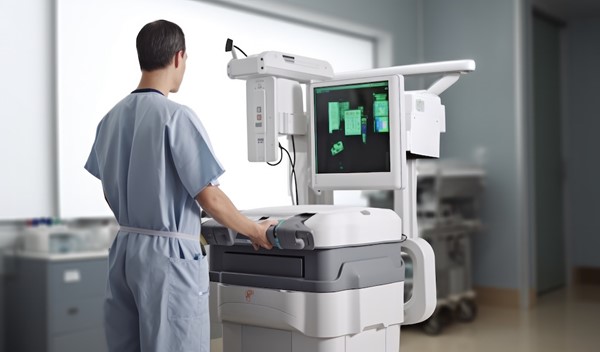




-160x160-state_article-rel-cat.png)







-160x160-state_article-rel-cat.png)


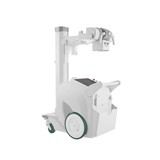
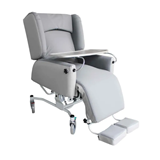
-160x160-state_article-rel-cat.png)

